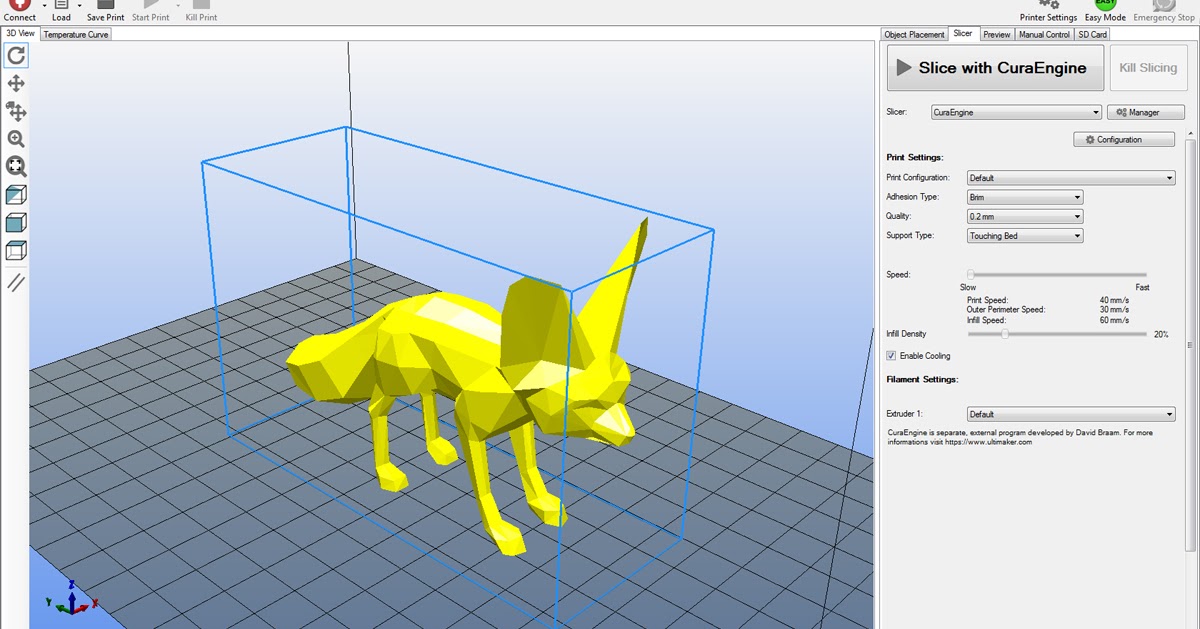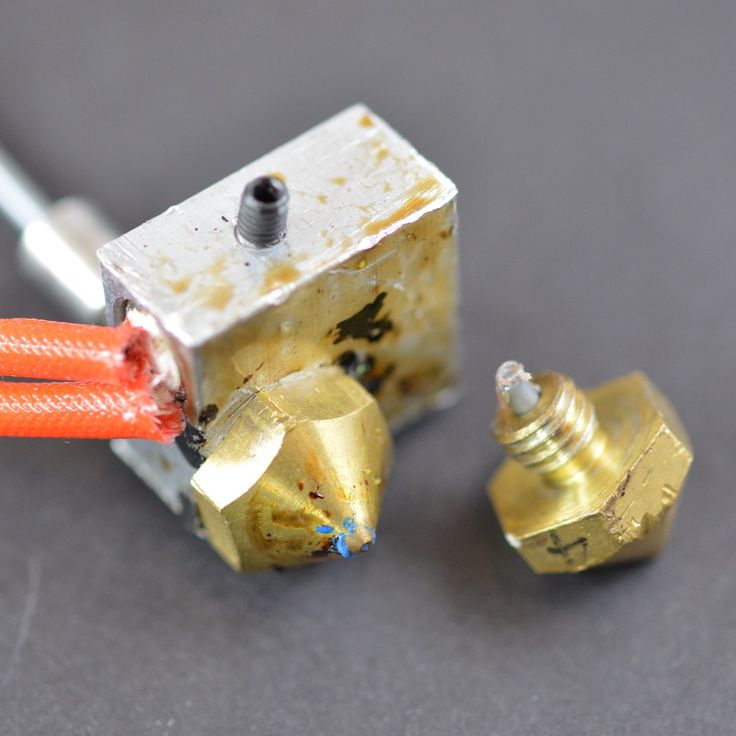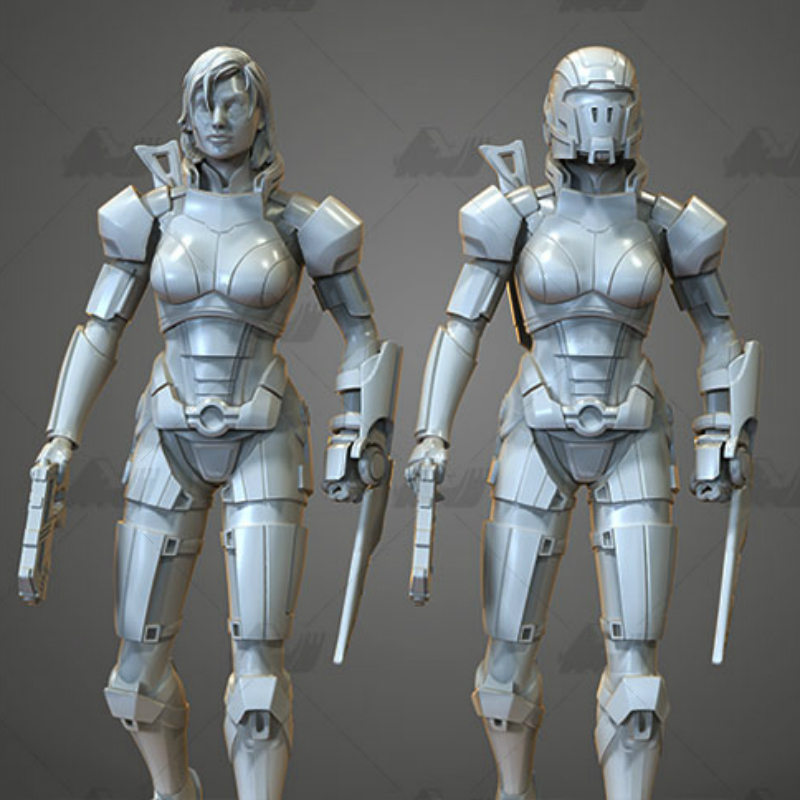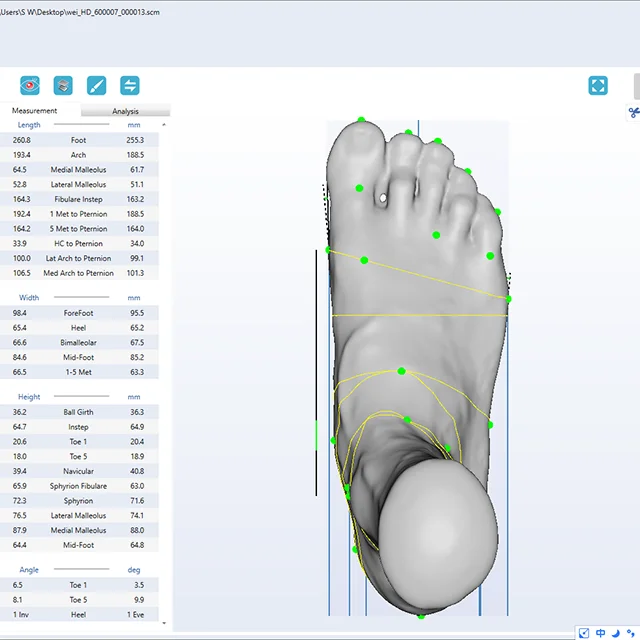Best beginner 3d printing software
10 Best 3D Printing Software for Beginners
3D printing continues to make inroads into the hobbyist market as well as in the manufacturing domain. Product fabricators, medical experts, and construction engineers alike are now seeing the utility and convenience of this manufacturing method.
3D printers outwardly appear to be standalone devices. However, this is not so. Software programs control the printing hardware and mesh the parts of the build process together. They help the designer create the digital models of the pieces to be printed, then assist in determining the printing strategy. Finally, they send the printer the specific instructions it needs to carry out each step of the printing process.
The best 3D printing software programs currently on the market are Tinkercad, Blender, and SketchUp. This article will discuss those three programs and more as part of this review of 10 of the best 3D modeling software programs for beginners, and how they work.
1.
Tinkercad was created by a renowned software company, Autodesk. This 3D modeling program provides the ability to manipulate shapes found in a library of files. Models are built by piecing together these basic shapes. Tinkercad also allows for scaling and rotation of these geometrical building blocks, as well as the option of making them hollow or solid. Beginners and young users alike will find this software quite helpful because of the simple nature of the user interface. The program is completely free and accessible to anyone. Entry-level students and people with no prior experience in handling 3D printing software should strongly consider Tinkercad.
2. Blender
Blender is a 3D design software package with quite a range of applications. Due to the versatility of this application, not only can one create 3D models, but also video games, and visual effects (VFX) in movies. Blender possesses a feature called a 3D printing toolbox. This enables a user to analyze a mesh to see if there are any errors that could potentially cause the printing process to fail.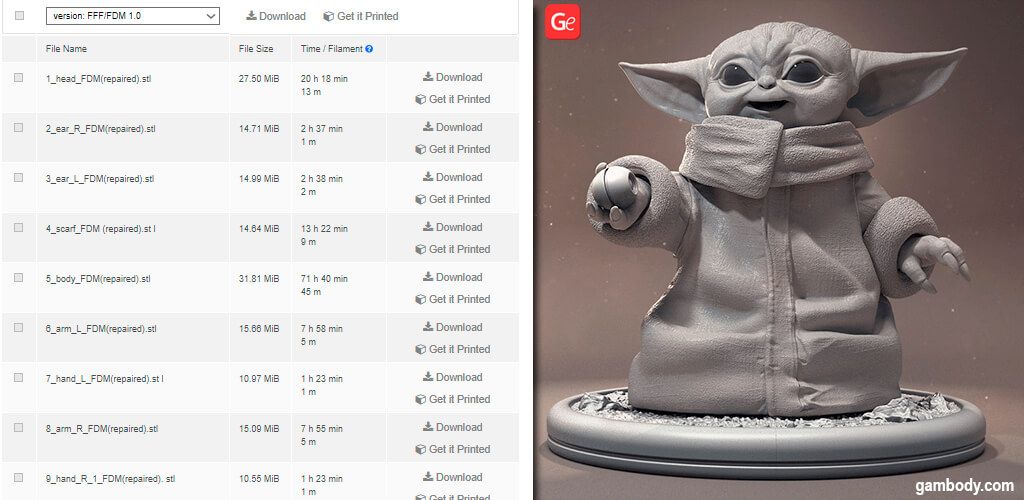 With the toolbox, the geometry of the overhangs can be checked for accuracy. Moreover, it works on Windows, macOS, and Linux operating systems. Blender is great for sculpting and mesh modeling. It is a completely free and open-source software program. Though Blender has a lot of beginner resources, it is designed for use by professionals.
With the toolbox, the geometry of the overhangs can be checked for accuracy. Moreover, it works on Windows, macOS, and Linux operating systems. Blender is great for sculpting and mesh modeling. It is a completely free and open-source software program. Though Blender has a lot of beginner resources, it is designed for use by professionals.
3. SketchUp Free
Sketchup is a 3D software program used for the creation of architectural designs. It also allows for the visualization of large types of machinery and their various parts. Its specialty is direct modeling, which is creating geometry rather than features. SketchUp has both a free and a paid version. The free version is quite helpful but it comes with limited features including its compatibility with only STL, SKP, and PNG file formats. It is good for personal use but may not be a good option in an organizational setting. The paid version comes with three offers: SketchUp Shop ($119/year), SketchUp Pro ($299/year), and SketchUp Studio ($699/year).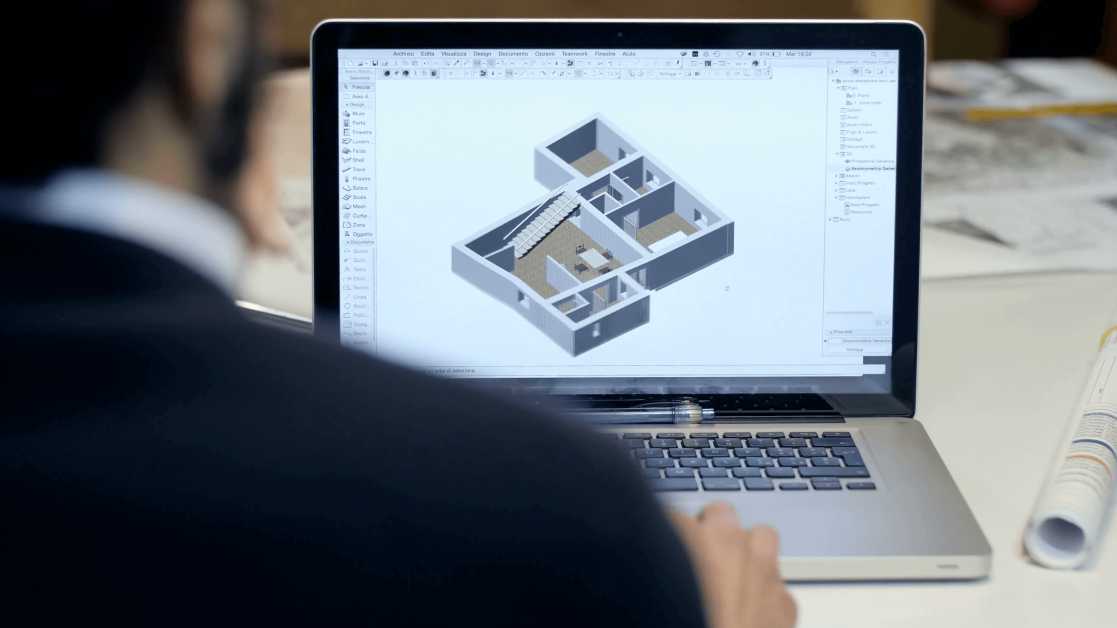 SketchUp is a 3D modeling software for beginners who want to improve their design skills.
SketchUp is a 3D modeling software for beginners who want to improve their design skills.
4. Meshmixer
Another 3D modeling software program for beginners is Meshmixer, from Autodesk. Unlike other conventional programs, Meshmixer does not allow one to build 3D models from scratch. Nevertheless, it is handy for repairing, hollowing, and filling pre-existing models. Meshmixer is used for direct modeling, optimization, and sculpting. This free 3D design software program is good for both beginners and professionals.
5. SculptGL
SculptGL is the widely used sculpting software. It is browser-based and allows one to mold a lump of “digital clay” into any desired shape. SculptGL is also a free and open-source 3D modeling program. It is user-friendly and quite accessible. Maximize the benefits of the software as a beginner by understanding the basic commands and 3D modeling techniques.
6. Vectary
Vectary is online software that supports both 2D and 3D modeling. It has software modules for subdivision modeling, parametric plugin, and mesh modeling. This easy-to-use 3D drawing app has proven useful to both beginners and professionals. It is also used for product design, games, and graphic design. A $12 monthly subscription is needed to access the complete set of software functions. Vectary is best used for parametric and mesh modeling.
It has software modules for subdivision modeling, parametric plugin, and mesh modeling. This easy-to-use 3D drawing app has proven useful to both beginners and professionals. It is also used for product design, games, and graphic design. A $12 monthly subscription is needed to access the complete set of software functions. Vectary is best used for parametric and mesh modeling.
7. Wings 3D
Wings 3D, a 3D modeling software program for beginners, is a subdivision modeler with advanced options. Although the tools are advanced, beginners can navigate their way through them. For example, a feature called "AutoUV" enables a user to map or drag and drop images on a 3D model. Wings 3D is a free and open-source modeling program. It is best for those looking for a wide array of tools with a user-friendly interface, whether beginners or professionals.
8. BlocksCAD
BlocksCAD, a 3D model builder, is a simplified version of openSCAD. In BlocksCAD, model scripts are created by stacking together colorful bricks. It is ideal for kids, as its LEGO-like approach to scripting makes learning easier. Beginners will find the colorful interface quite appealing. This web-based app is completely free and is good for beginners who want to make designs based on openSCAD scripting.
It is ideal for kids, as its LEGO-like approach to scripting makes learning easier. Beginners will find the colorful interface quite appealing. This web-based app is completely free and is good for beginners who want to make designs based on openSCAD scripting.
9. Leopoly
Leopoly is a software program that offers 3D printing, customization, and sculpting of 3D models. It is quite handy if a user has no means of printing the created model. This is because Leopoly models can be created and sent to a 3D printing service bureau. It is a free 3D software program and is perfect for students and beginners looking to sculpt 3D models.
10. ZBrushCoreMini
ZBrushCoreMini is a simplified version of Pixologic's ZBrush, an advanced sculpting program used by professionals. It comes with a selection of eight basic brushes for smoothening, polishing, pinching, inflating, and more for the 3D Modeler to apply. ZBrushCoreMini is completely free and good for beginners who want to learn and understand digital sculpting.
What Is 3D Printing Software?
A 3D printing software is used to build, slice, and prepare 3D models for creation using a 3D printer. For modeling software programs that do not come with slicer capabilities, a slicer software application such as Fusion Autodesk 360 may be used. A slicer transforms the model built with the CAD software into a form that the 3D printer can understand and process.
For more information, see our guide on 3D Printing.
What Is the Most Widely Used 3D Printing Software?
The most widely used 3D printing software is Autodesk Fusion 360. It Is a great tool aimed at professionals for designing and manufacturing products. Inexperienced designers can start out with Tinkercad (another software from Autodesk) before transitioning to Fusion 360. Fusion 360 possesses capabilities that distinguish it from other software including generative design, sculpting tools, computer-aided manufacturing (CAM), and 3D printing.
How To Use 3D Printing Software
The steps in using 3D printing software depend on the program used.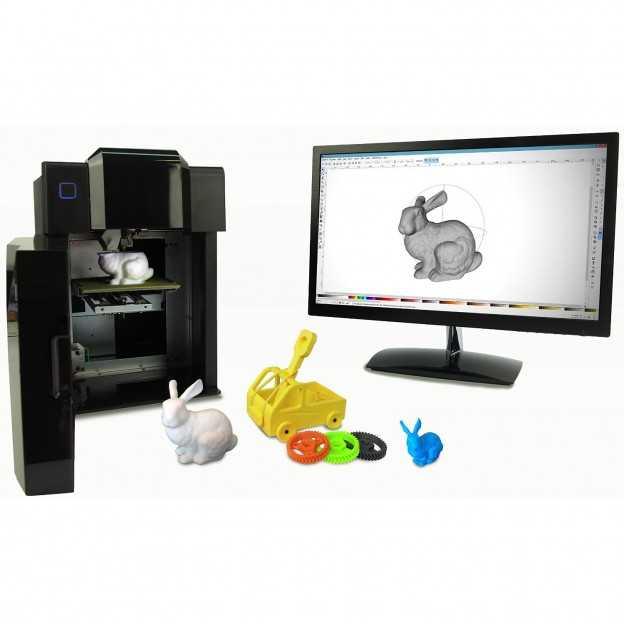 Most brands will have an instruction guide to get you started. In general, the steps are:
Most brands will have an instruction guide to get you started. In general, the steps are:
- Use CAD software to create a digital model.
- Use slicer software to break the model into a series of instructions that the printer can process.
How Does 3D Printing Software Work?
A 3D printing software works by using CAD software first to create the digital model of a part or object that is to be printed. Then, a slicer software is used to break down this model into a succession of slices. Without the slicer, the 3D printer will be unable to interpret the 3D model. The last step is the actual printing of the desired object. The data generated by the slicer program are sent to the printer as step-by-step instructions in G-code, and the part is then printed according to these machine instructions.
What Makes 3D Printing Software the Best?
Since 3D printing software is a fundamental component in making 3D printing a reality, no 3D printing user can do without it. When choosing a 3D printing software, the factors that make a 3D printing software program the best depend on its ease of use and the available features that cater to a user’s needs. Some of the important features are build preparation, good management of the manufacturing processes, and work order creation.
When choosing a 3D printing software, the factors that make a 3D printing software program the best depend on its ease of use and the available features that cater to a user’s needs. Some of the important features are build preparation, good management of the manufacturing processes, and work order creation.
For more information, see our guide on the Best 3D Printing Software.
Is There Free 3D Printing Software?
Yes, there are several free 3D printing programs including Tinkercad, SculptGL, and Meshmixer. Several of these platforms are open source. Beginners and intermediate-level users alike looking to hone their modeling skills will find these to be very useful applications.
Summary
The article presented and discussed ten (10) of the best 3D printing software applications for beginners. To learn more about 3D printing software for beginners in the 3D printing business and determine which one would work best for you, contact a Xometry representative.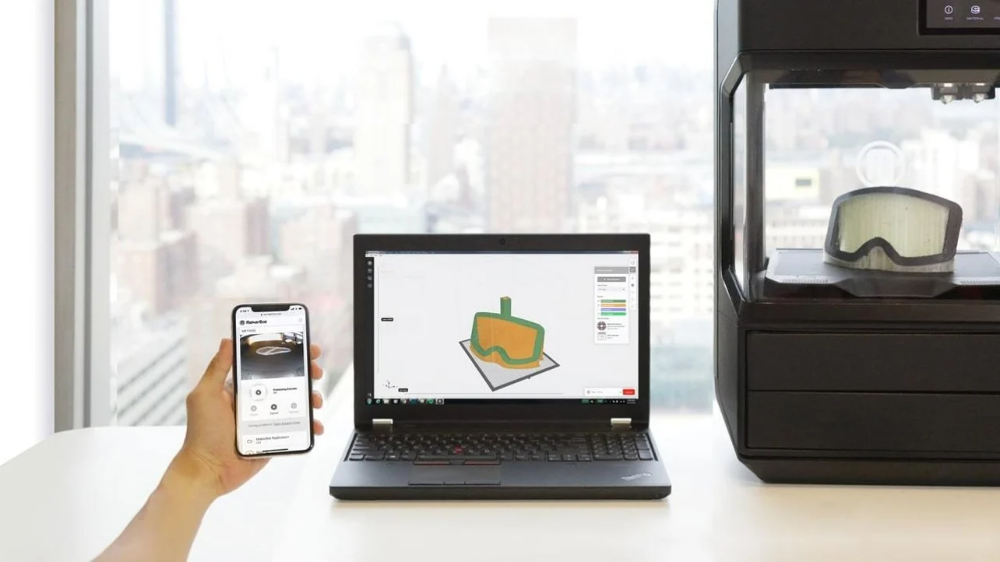
Xometry provides a wide range of manufacturing capabilities, including 3D printing and other value-added services for all of your prototyping and production needs. Visit our website to learn more or to request a free, no-obligation quote.
Disclaimer
The content appearing on this webpage is for informational purposes only. Xometry makes no representation or warranty of any kind, be it expressed or implied, as to the accuracy, completeness, or validity of the information. Any performance parameters, geometric tolerances, specific design features, quality and types of materials, or processes should not be inferred to represent what will be delivered by third-party suppliers or manufacturers through Xometry’s network. Buyers seeking quotes for parts are responsible for defining the specific requirements for those parts. Please refer to our terms and conditions for more information.
Team Xometry
This article was written by various Xometry contributors. Xometry is a leading resource on manufacturing with CNC machining, sheet metal fabrication, 3D printing, injection molding, urethane casting, and more.
Xometry is a leading resource on manufacturing with CNC machining, sheet metal fabrication, 3D printing, injection molding, urethane casting, and more.
Top 11 Best 3D Software For Beginners
Published on September 11, 2020 by Alexandrea P.
3D printing may seem difficult if you are a complete beginner with no experience, especially when it comes to using 3D software. This can cause people to give up before creating their finished STL files. To help you overcome this challenge and achieve your 3D printing goals, we created the following Top 11 3D software for beginners listing. These 3D software will help you design the 3D model of your choice, which you can then use to print your final piece on your FDM or SLA 3D printer at home! These 3D software may not always include a slicer or repair tool in them, so if you are looking for software specifically to slice or repair your file, we also have you covered!
1. Morphi
Developed by a New York startup, Morphi is a 3D software app that was specifically designed for use on tablets. The app allows you to create 3D models in a simple way and contains a complete library with a large number of decorative and functional models. While the application itself is free, you will have to pay to open specific 3D models and application tools. If you are interested in using this version in schools, there exists another version just for this, the Morphi Edu, which is priced at $4.99 for 20 downloads. You can find more information HERE.
The app allows you to create 3D models in a simple way and contains a complete library with a large number of decorative and functional models. While the application itself is free, you will have to pay to open specific 3D models and application tools. If you are interested in using this version in schools, there exists another version just for this, the Morphi Edu, which is priced at $4.99 for 20 downloads. You can find more information HERE.
2. BlocksCAD
This 3D software was specifically created for educational purposes, its development is done so that anyone can later use OpenSCAD, a more professional CAD software. The commands for the development of the objects and their transformations are represented by colour blocks, reminiscent of the well-known construction toys, LEGO. BlocksCAD’s code is fully compatible with OpenSCAD’s so you can give your models the last touch up on there. Export formats can be OpenSCAD or STL. To make sure that anyone can learn to use the software, BlocksCAD has a Youtube channel with different tutorials on 3D modeling and costs $149 a year. Find more information HERE.
Find more information HERE.
3. Leopoly
Leopoly is a cloud-based 3D modeling software that was developed by the Hungarian startup, LeoPoly. Both simple and easy to use, it offers different options when modeling an object, such as a library of available objects that can be customised in terms of color and text, and the user can also choose the model from a gallery of files created by other users. This 3D software is mostly aimed at brands, designers, developers, students & consumers that are beginners in 3D modeling. You can find more information HERE.
4. 3D Slash
3DSlash was created in 2013 by Silvain Huet, who was inspired by his son playing the video game Minecraft, a game where you have to survive in a world set up with little squares. 3Dslash, like Minecraft, uses the power of little blocks that you can either delete or use to help create your 3D model. The software offers different tools to help shape your designs, including the possibility to transform parts from reality to 3D with just a picture that you simply upload and trace. With a resolution of up to 0.1 mm, this program will help make your object fairly accurately, enabling you to bring your creative realities to life! You can find more information HERE.
With a resolution of up to 0.1 mm, this program will help make your object fairly accurately, enabling you to bring your creative realities to life! You can find more information HERE.
5. TinkerCAD
This is a free online 3D modeling software from Autodesk, it is geared towards complete beginners. The software features an intuitive block-building concept, allowing you to develop models from a set of basic shapes. The online software comes with a library of millions of files that users can use to find shapes that suit them best and manipulate them as they wish. It also has a direct interaction with third party printing services. It’s a quite simplistic program and will have limitations for some designs. However, it is aimed mostly at people with no experience whatsoever with 3D modeling for 3D printing. Find more information HERE.
6. Clara.io
Clara.io, released by Exocortex, is a full-featured cloud-based 3D modeling, animation and rendering software that runs in your web browser. This cloud-based 3D modeling solution enables to make complex 3D models, create beautiful photorealistic renderings, and share them without installing any software programs. The learning curve is not too steep, which makes it suitable for users that do not have much experience with 3D modeling. On this software, 3D geometries are made up of different elements, known as components. The three different components are Faces, Edges and Vertices. On the Clara.io website, you will find the resources necessary to learn more about how to model on this software.
This cloud-based 3D modeling solution enables to make complex 3D models, create beautiful photorealistic renderings, and share them without installing any software programs. The learning curve is not too steep, which makes it suitable for users that do not have much experience with 3D modeling. On this software, 3D geometries are made up of different elements, known as components. The three different components are Faces, Edges and Vertices. On the Clara.io website, you will find the resources necessary to learn more about how to model on this software.
7. SketchUp Make
Sketchup Make (formerly known as SketchUp) was designed in 2000 by LastSoftware for use in architectural design, it is now owned by Trimble Navigation LLC. The Sketchup program is free and offers simple tools for a wide spectrum of users: makers, architects, designers, engineers and builders. This program allows you to sketch up your ideas easily into a 3D model. Before starting your creation, you can select a template that will guide you throughout the modeling process.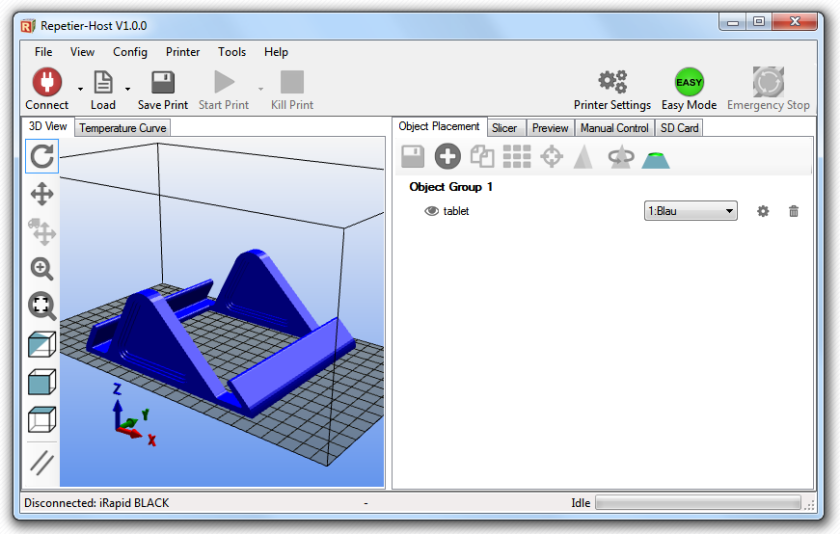 It is a very versatile 3D software, that maintains a good balance between usability and functionality, a good option for beginners that are serious about learning CAD. You can find more information HERE.
It is a very versatile 3D software, that maintains a good balance between usability and functionality, a good option for beginners that are serious about learning CAD. You can find more information HERE.
8. Sculptris
Sculptris uses digital sculpting as the basis to create a 3D model. In other words, you will be able to create your 3D models from shaping any mesh with different brush strokes. Creating your model will be similar to shaping an object using modeling clay. This software starts as a sphere, then the user can then model as they wish by stretching, digging, smoothing, etc. This makes it an ideal tool when creating animated characters or video games. Sculptris belongs to Pixologic, the creator of Zbrush. While this is a good beginner 3D software, it is no longer in development, you can still download it but it might not be compatible with new operating systems.You can find more information HERE.
9. Moment of Inspiration (MoI)
MoI is a software that is available for both Windows and Mac, and is particularly useful because the user interface has been made very intuitive. Therefore, it is a suitable 3D modeling software for beginners or anyone frustrated with the complexity of existing CAD tools. Most users are either designers or artists but the software’s advanced boolean functions enable the creation of mechanical models too. The licence costs $295.
Therefore, it is a suitable 3D modeling software for beginners or anyone frustrated with the complexity of existing CAD tools. Most users are either designers or artists but the software’s advanced boolean functions enable the creation of mechanical models too. The licence costs $295.
10. Vectary
Vectary is an online 3D modeling tool with which you can create, share and customise 3D designs. Vectary is a combination of standard mesh modeling, subdivision modeling and parametric plugins. It was built from scratch to make 3D modeling easy-to-use for beginners (but can also be useful to pros). Models are saved in the cloud, where they are accessible through any modern browser, users can access their creations very easily and share their models from anywhere in the world. You can find more information HERE.
11. Meshmixer
The Meshmixer software is a free CAD software part of the Autodesk software family. The Meshmixer is not a typical CAD software, as it does not allow you to create your product from the beginning. Instead, this software will help you with animation, modeling, zippering, hole filling, hollowing, 3D surface stamping, and auto repair of pre-existing models that you modify to make your own. You can find more information HERE.
Instead, this software will help you with animation, modeling, zippering, hole filling, hollowing, 3D surface stamping, and auto repair of pre-existing models that you modify to make your own. You can find more information HERE.
Do you still need help choosing your 3D software? You can find our expert advice about choosing a 3D modeling software HERE. Let us know in a comment below or on our Facebook and Twitter pages if the listing above was useful! Don’t forget to sign up for our free weekly Newsletter, with all the latest news in 3D printing delivered straight to your inbox!
REC Wiki » Best 3D Printing Software in 2022
3D printing is a multi-step process, because you first need to design a 3D model, check it for errors, convert it to machine code, and only then the 3D printer goes into business . In this article, we will share examples of programs that can help at every stage of preparatory work and directly during 3D printing.
Contents:
1. 3D modeling software:
- Tinkercad
- ZBrushCoreMini
- 3D Builder
- SketchUp Free
- Fusion 360
- FreeCAD
- Blender
2. Editing and repairing STL files:
- Meshmixer
- MeshLab
3. Slicers:
- Cura
- PrusaSlicer
- ideaMaker
- ChiTuBox Basic
- Lychee Slicer
- Kiri:Moto
- IceSL
4. Control programs:
- OctoPrint
- MatterControl 2.0
- AstroPrint
5. G-code Visualizers
- UVTools
- WebPrinter
- Gcode Analyzer
- Design Software
1. 3D modeling software
If you are ready to create from scratch, you will have to learn special 3D modeling software. Many of them, especially professional computer-aided design systems, can be expensive investments, but on the other hand, there are plenty of quite capable and at the same time free offers on the market.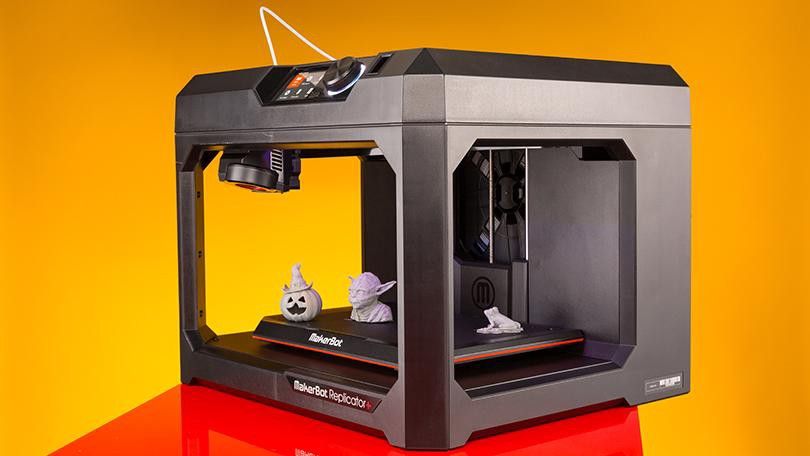
Tinkercad
Tinkercad is a browser-based application from Autodesk that is great for no-experience users, even kids, because of its simplicity. In this program, 3D models are built on the basis of basic blocks - simple geometric shapes that are joined together and then "filed" to the finished look. You can also convert 2D vector images into 3D models. Of course, you have to pay for simplicity - in the case of Tinkercad, rather primitive functionality that makes it difficult to create truly complex models. But such a task is not worth it: having gained basic skills on Tinkercad, you can always move on to more complex and more capable programs on our list. nine0003
Official website
ZBrushCoreMini
ZBrushCoreMini is primarily a 3D sculpting tool, especially popular among those who create human and animal figures, computer game characters, comics, and the like. This software is mainly aimed at beginners and users with moderate experience, but at the same time, it is full of impressive features that make the work easier.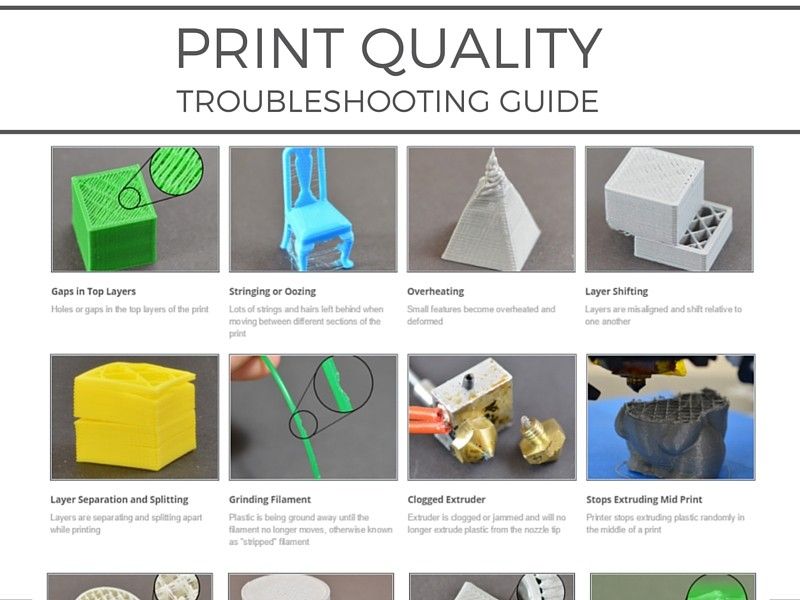 For example, dynamic tessellation algorithms constantly analyze the surface of the working model and automatically add polygons so that detail is not violated. nine0003
For example, dynamic tessellation algorithms constantly analyze the surface of the working model and automatically add polygons so that detail is not violated. nine0003
ZbrushCoreMini is offered free of charge and is positioned as an entry-level program for learning and gradually moving to more capable and complex options - ZBrush and ZbrushCore.
Official website
3D Builder
This program was developed by Microsoft and was included with Windows 10 for some time, although now it needs to be downloaded and installed separately. 3D Builder allows you to edit models in STL, OBJ, and 3MF formats, as well as create models from scratch. In this regard, the program is quite primitive, but it is simple and understandable even for novice modelers. nine0003
One of the interesting features of 3D Builder is the ability to simplify meshes by reducing the number of polygons, file weight and processing time in the slicer - useful in cases where the original designer obviously went too far with polygons. Additionally, you can import models from the library and even use Kinect sensors to 3D scan and import models of physical objects.
Additionally, you can import models from the library and even use Kinect sensors to 3D scan and import models of physical objects.
Official website
SketchUp
SketchUp is a web application with a great combination of simplicity and functionality. The user-friendly interface is intuitive and greatly facilitates learning, and the set of tools is quite diverse even for advanced users - hence the wide popularity of this program. nine0003
The free version was formerly called SketchUp Make, but is now simply called SketchUp Free. It includes everything you need for 3D modeling for 3D printing, just don't forget to download the module for exporting STL files - it's also free. The kit comes with 10 GB of storage for projects in the cloud and access to the 3D Warehouse, a repository with open source user-generated content.
Official site
Fusion 360
Professional CAD developed by Autodesk and famous for its ease of use and advanced functionality. This includes parametric modeling and mesh analysis and load distribution tools, including through generative design with topological optimization. The program is great for those who are engaged in 3D printing of functional products, for example, for industrial applications. nine0003
This includes parametric modeling and mesh analysis and load distribution tools, including through generative design with topological optimization. The program is great for those who are engaged in 3D printing of functional products, for example, for industrial applications. nine0003
Some versions of Fusion 360, such as hobby and student versions, are even available free of charge. FreeCAD FreeCAD The program relies on a parametric approach: at any point in history, you can scroll back and make changes to the parameters. The program even includes finite element analysis and a robotic system simulator. nine0003
Official site
Blender
One of the most popular 3D modeling programs, but quite difficult to master. Not the best choice for a novice designer, but a great tool for those who have already gotten their hands on simpler editors. Fortunately, the popularity of Blender has led to a huge number of guides, tutorials, and visual examples published by experienced users for beginner colleagues.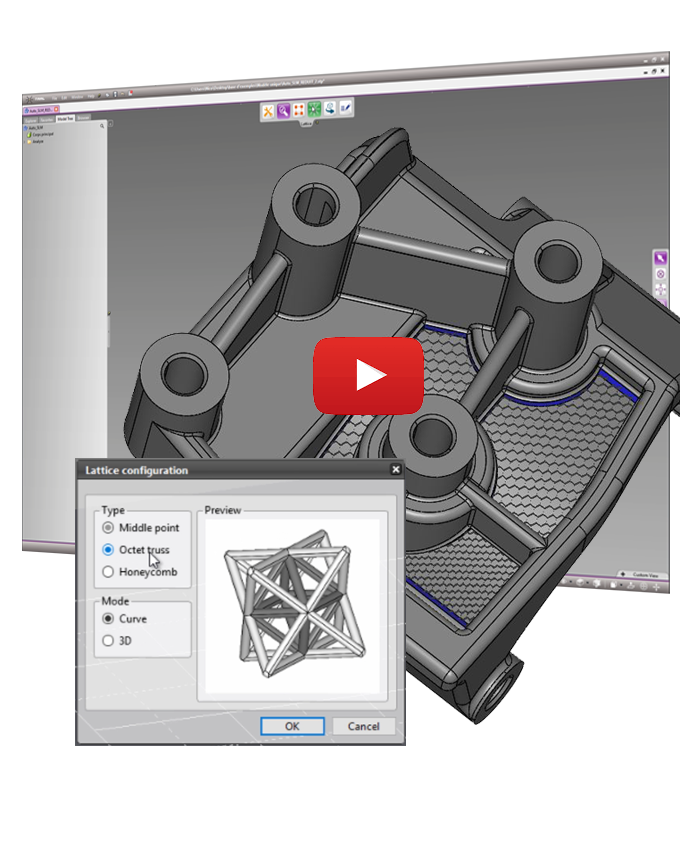
Developers are trying to make the program more convenient without sacrificing functionality: the interface has recently been updated, rendering has been improved, and 3D design and animation capabilities have been expanded. And yes, it's open source and freeware, so you don't risk anything. nine0003
Official site
2. Editing and repairing STL files
If you find an interesting 3D model on the Internet, this does not mean that it can be immediately sent to a 3D printer. Many models are created for completely different needs, such as animations or video games, and in principle are not intended for 3D printing. But there is a solution: before processing such models into G-code, they must first be repaired so that the slicer can do its job well. The following programs on our list will help you cope with the repair. nine0003
Meshmixer
Meshmixer is an advanced and free program from Autodesk that allows you to view and check 3D models for errors in polygonal meshes that can ruin 3D printing. If such problems are detected, the program can automatically repair meshes. One example of an application is finishing 3D scans to a state suitable for 3D printing.
If such problems are detected, the program can automatically repair meshes. One example of an application is finishing 3D scans to a state suitable for 3D printing.
Additional functionality includes mesh blending, 3D sculpting, surface writing, cavity creation, support branching, mesh smoothing, and more. nine0003
Official website
MeshLab
MeshLab is another open source program for editing polygonal meshes. MeshLab has the necessary tools for editing, checking, cleaning and converting meshes with the ability to combine meshes into one model and patch holes that can lead to incorrect processing of models into G-code.
Official website
3. Slicers
After receiving a 3D model, it must be converted into machine code - a series of commands understandable to CNC machines, including 3D printers. Slicers are responsible for this task - programs that accept digital models (usually in the form of files with STL, OBJ or 3MF extensions), analyze their structure, and then compile lists of actions for 3D printers, called G-code (Gcode). Such lists contain all the information necessary for the equipment: to what temperature to warm up the extruders and tables, whether to use airflow, along what trajectory and at what pace to lay the plastic. nine0003
Such lists contain all the information necessary for the equipment: to what temperature to warm up the extruders and tables, whether to use airflow, along what trajectory and at what pace to lay the plastic. nine0003
Cura
Cura is a slicer from the Dutch company Ultimaker, designed primarily for proprietary 3D printers, but open source and compatible with most other FDM/FFF systems. The program is easily customizable with various plugins. Since this is a very popular program, the chances are that it already has a profile with optimal settings for your 3D printer. If not, then nothing prevents you from creating a profile manually or using profiles prepared by other users. nine0003
The program has several levels of difficulty depending on the level of training - basic, advanced, expert and complete. The higher the level, the more access to customizable options. At a basic level, the program takes the bulk of the work on itself, helping inexperienced users.
Cura is constantly being developed and improved through regular updates and is also offered free of charge, although a paid version of Cura Enterprise is available to professional users with licensed plug-ins from the Ultimaker Marketplace, technical support and additional security measures. nine0003
In addition to converting 3D models to G-code, Cura can also take on the role of a control program, but this will require a constant connection between the 3D printer and the computer throughout the 3D printing. Professionals appreciate another feature of Cura - seamless integration with professional computer-aided design systems such as SolidWorks and Siemens NX.
In general, Сura is suitable even for novice users, especially since a huge number of training videos and step-by-step guides are available for this program, both from developers and enthusiasts. nine0003
Official website
PrusaSlicer
3D printer manufacturer Prusa Research, under the leadership of the legendary Czech engineer Josef Prusa, whose designs are copied and refined around the world, has developed its own open source software based on the Slic3r slicer.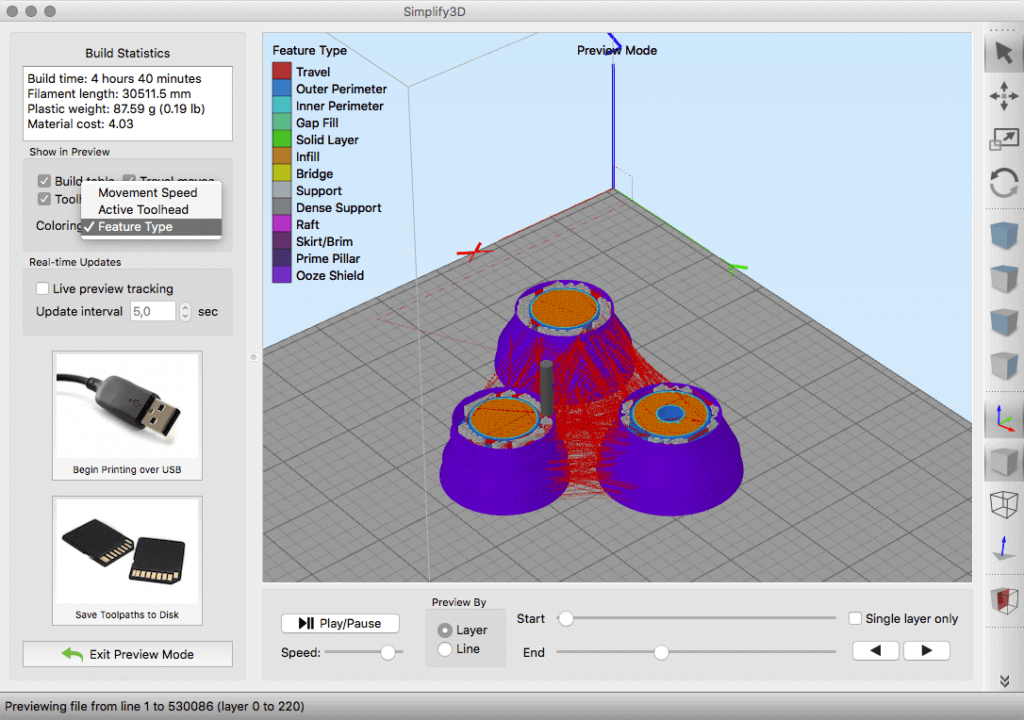 PrusaSlicer quickly gained popularity as it not only retains the original program's extensive customizations, but also adds a number of useful features not found in Slic3r. nine0003
PrusaSlicer quickly gained popularity as it not only retains the original program's extensive customizations, but also adds a number of useful features not found in Slic3r. nine0003
A redesigned interface, support for Original Prusa branded 3D printers, and profiles with settings to work with many common polymers are just some of the improvements. Additionally, algorithms for generating support structures have been improved, support for multimaterial 3D printing and the ability to dynamically adjust the layer thickness have been added.
PrusaSlicer can process models not only for FDM 3D printers, but also for stereolithographic systems printing with photopolymers. As with Cura, the user can select a difficulty level with appropriate access to fine-tuning. nine0003
Official website
ideaMaker
Raise3D's slicer is optimized for branded additive hardware in the same way that PrusaSlicer is optimized for Original Prusa 3D printers, and Cura is optimized for Ultimaker 3D printers, but this does not mean that it cannot be use with third party systems.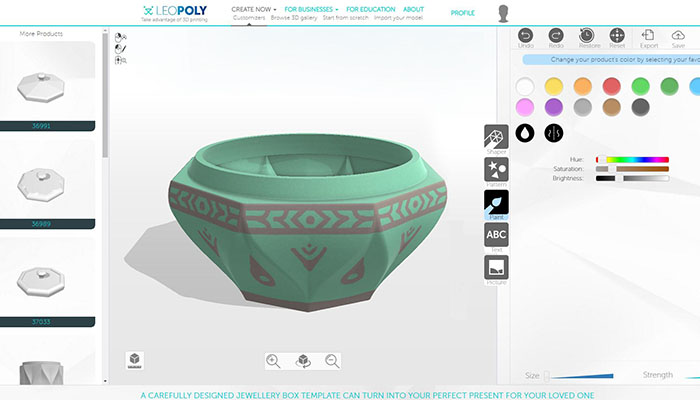 The organization of workflows and the interface is somewhat more complicated than in Cura and PrusaSlicer, but on the other hand, ideaMaker allows you to set up individual layers and apply textures for product customization. nine0003
The organization of workflows and the interface is somewhat more complicated than in Cura and PrusaSlicer, but on the other hand, ideaMaker allows you to set up individual layers and apply textures for product customization. nine0003
ideaMaker users can connect to the cloud platform and access hundreds of 3D printer profiles and materials created by other operators, or create their own library of settings.
Add the ability to customize support structures, split models for more efficient 3D printing of large parts, integrated mesh repair tools, and OctoPrint compatibility, and you have a flexible, versatile program to suit the needs of most 3D printers. nine0003
Official website
ChiTuBox Basic
This is a specialized slicer for those who use stereolithographic 3D printers that print with photopolymer resins. Most budget LCD masked stereolithography (MSLA) 3D printers rely on motherboards and firmware from ChiTu Systems, which also developed this software.
Users gain control over technology-specific parameters such as layer exposure time, as well as access to predefined profiles with settings for many popular 3D printers. The slicer takes into account such moments as the orientation of the model and the automatic construction of support structures with the possibility of manual optimization. nine0003
Official website
Lychee Slicer
A program from the independent Franco-Belgian team Mango 3D, not associated with 3D printer manufacturers, but with support for many popular stereolithographic 3D printers, including those from Elegoo, Anycubic, Phrozen and Creality.
One of the features of this program is the high level of automation. If you wish, you can simply click on the "magic" button (it's called Magic), and the slicer will do everything by itself: it will orient the model on the platform, generate supports, and so on. Although, here you are lucky: the results are not always optimal, but usually adequate for relatively simple models.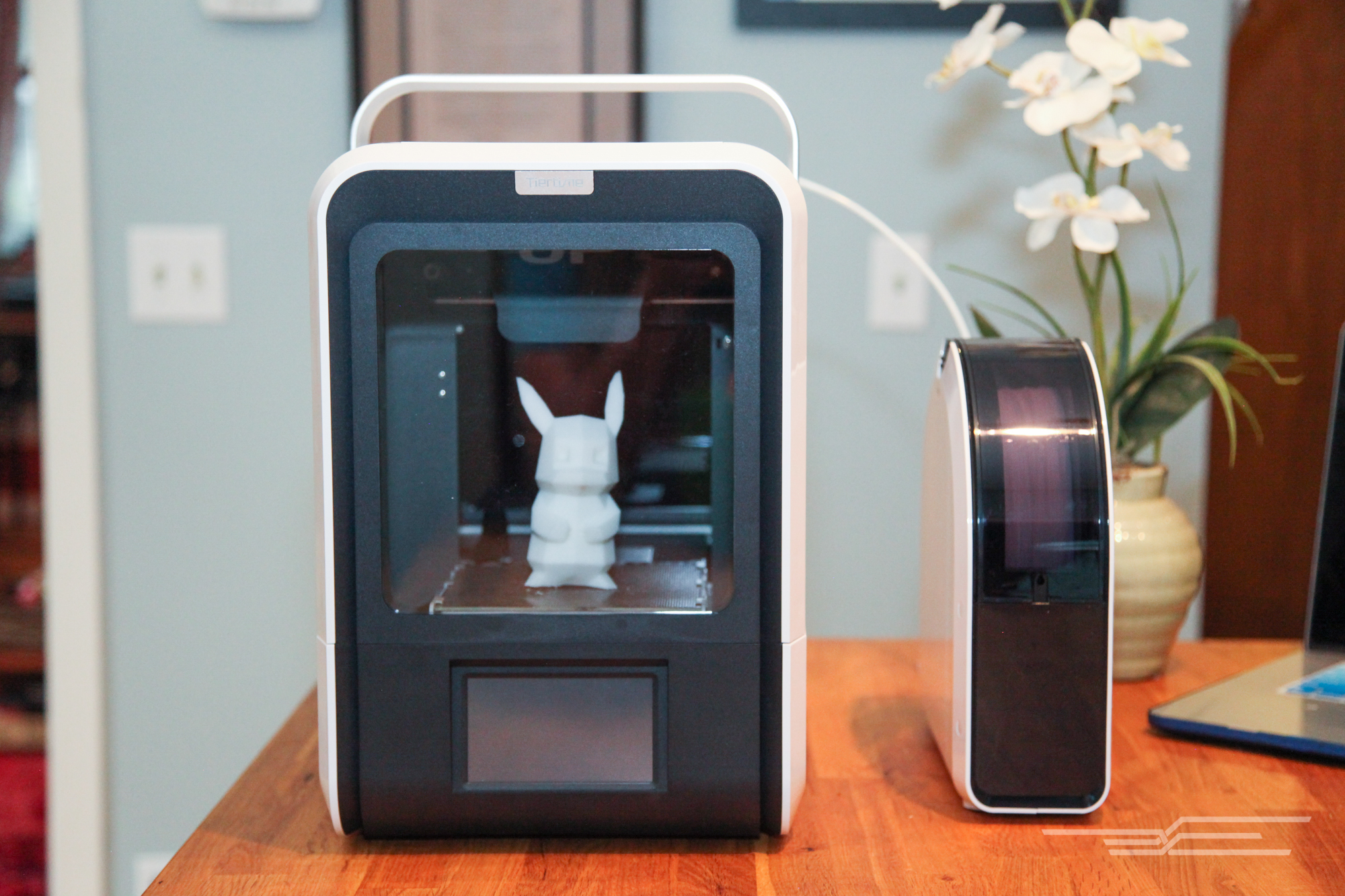 Otherwise, everything can be configured manually. nine0003
Otherwise, everything can be configured manually. nine0003
The program is offered in free and paid versions. The functionality of the free version is slightly reduced, but it has everything you need.
Official site
Kiri:Moto
Browser solution for those who lack computing power. Kiri:Moto can prepare 3D models for both 3D printing and laser engraving or milling. The settings are somewhat more primitive than in locally installed slicers, but are sufficient for most users. nine0003
Official website
IceSL
IceSL is a combination software that combines slicing with 3D modeling. In the left window, you can edit 3D models using scripts in the Lua language, which makes it possible to perform parametric modeling. On the right side, the 3D printing settings are displayed. For beginners, pre-configured settings are available, while experienced users can take advantage of features such as specific adjustment of parameters for individual layers with automatic gradation of intermediate areas.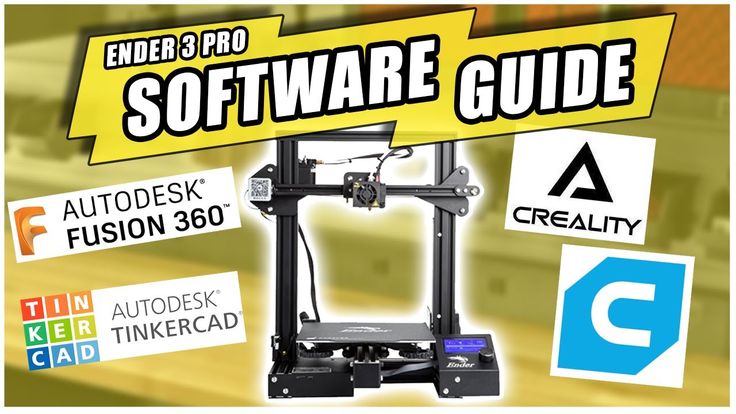 For example, this allows you to gradually reduce or, conversely, increase the filling density of the product as it is built, or gradually change the thickness of the layers. nine0003
For example, this allows you to gradually reduce or, conversely, increase the filling density of the product as it is built, or gradually change the thickness of the layers. nine0003
Official website
4. Control programs
Control programs are designed for exactly this - managing workflows during 3D printing. Although you can insert a G-code drive into almost any 3D printer and press the start button, this is not always convenient, especially when you have to work with several 3D printers at the same time, and even more so when you do it remotely. This is where control programs come to the rescue. In addition, some of them offer additional functionality, including slicing and even editing 3D models. nine0003
OctoPrint
A web-based appliance that requires connection to a 3D printer via a microcomputer such as a Raspberry Pi equipped with a Wi-Fi module. This system allows you to control 3D printers remotely. OctoPrint accepts G-code from almost any slicer and provides the ability to visualize - view files before and during 3D printing.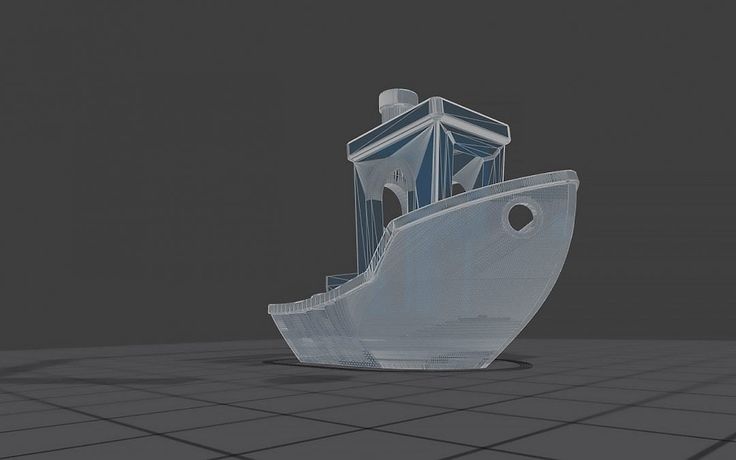 Alternatively, STL files can be loaded and processed directly in OctoPrint.
Alternatively, STL files can be loaded and processed directly in OctoPrint.
OctoPrint not only provides all the necessary tools for remote management, but also allows you to track the work in progress using notifications via various instant messengers. nine0003
This is a completely free, open source program with many plug-ins created by enthusiasts and available on the official website.
Official website
MatterControl
MatterHackers offers its own control program, slicer and 3D editor in one package. MatterControl allows you to directly control and observe 3D printing, slice, export G-code to SD cards for offline printing, and even create 3D models from scratch. The 3D printer will need a Wi-Fi or USB connection to run MatterControl. nine0003
The interface is well structured: on the left side there is a file browser and a library of simple geometric shapes. Interestingly, these shapes can be dragged into the 3D model and used as support structures.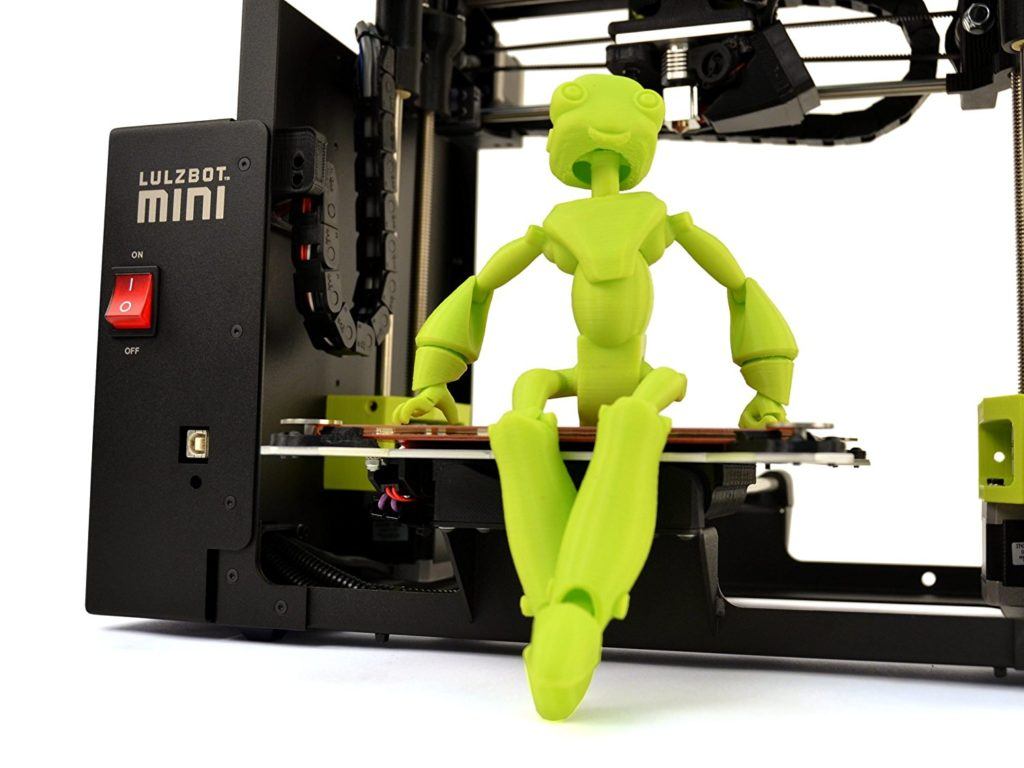
Basic functionality is available in the free basic version, advanced users can pay to upgrade to MatterControl Pro.
Official website
AstroPrint
AstroPrint is a cloud-based management platform that allows you to remotely monitor and control multiple 3D printers simultaneously, store files, convert 3D models to G-code, and track workflow statistics. The functionality ranges from basic in the free version to advanced with different levels of paid subscriptions. nine0003
The 3D printer will require a Wi-Fi module to fully work with AstroPrint. In conjunction with the Raspberry Pi, the system is similar in functionality to OctoPrint: you can process models and send the finished code to a 3D printer via a web interface without the need for additional software. Another plus is integration with popular repositories of 3D models Thingiverse and MyMiniFactory, as well as 3D editors 3D Slash and Leopoly.
Official website
5.
 Programs for visualizing G-code
Programs for visualizing G-code What if you find an old file with a G-code, but you have no idea what it is and why - maybe garbage, or maybe an excellent, but long-forgotten model without a clear marking in the file name? The programs in this section will help you visualize the contents of such files.
UVTools
This program combines file browsing with layer editing and even model repair for stereolithographic 3D printing. The program can also be used as a plug-in for PrusaSlicer, adding support for third-party photopolymer 3D printers - although PrusaSlicer is open source, support for stereolithographic systems is still limited to branded equipment. At the same time, UVTools allows you to print calibration samples to check the exposure time and other parameters, which can be useful, for example, when working with new photopolymers that have not yet been tested. nine0003
Official website
WebPrinter
A simple browser tool for quick G-code preview, developed by the same team that created the IceSL slicer and 3D editor. The application works very simply: follow the link, upload the file with the G-code and see how the 3D printer will grow the model according to the commands provided. Unfortunately, the functionality is limited: for example, the application does not provide information about temperature settings. On the other hand, you can quickly figure out what kind of model is hidden in a file with an incomprehensible name. nine0003
The application works very simply: follow the link, upload the file with the G-code and see how the 3D printer will grow the model according to the commands provided. Unfortunately, the functionality is limited: for example, the application does not provide information about temperature settings. On the other hand, you can quickly figure out what kind of model is hidden in a file with an incomprehensible name. nine0003
Official website
Gcode Analyzer
An old but still very capable and popular G-code analysis web application. The 3D simulation doesn't work very well, but the 2D and G-code previews work great. In 2D mode, you can conveniently view individual layers, moving from layer to layer and following the construction path step by step using two sliders. G-code viewer displays a complete list of commands, allowing you to see what a particular line of code is doing. nine0003
Official website
Adapted translation of The Best Free 3D Printing Software of 2022 article.
Top 20 Free 3D Printing and 3D Printing Software
Looking for 3D printing software? We've rounded up the top 20 software tools for beginners and professionals alike. Most slicers are free.
What is a slicer? This is a program for preparing a digital model for printing. Models for 3D printing are usually distributed in STL files. To turn an STL file into G-code (a language that a 3D printer understands), a slicer program is required. It is called a slicer because it cuts (to slice - English) a 3D model into many flat two-dimensional layers, from which a 3D printer will add a physical object. nine0003
Which slicer should I choose? In this article, we will tell you which slicer is the best choice for 3D printing for each stage of your work. Which one is better for preparing a 3D model for printing? But what if you need to create a 3D model from scratch? And if you are only taking the first steps in 3D?
Don't be afraid: we've answered all of these questions, including the required skill level for each program and where you can download it.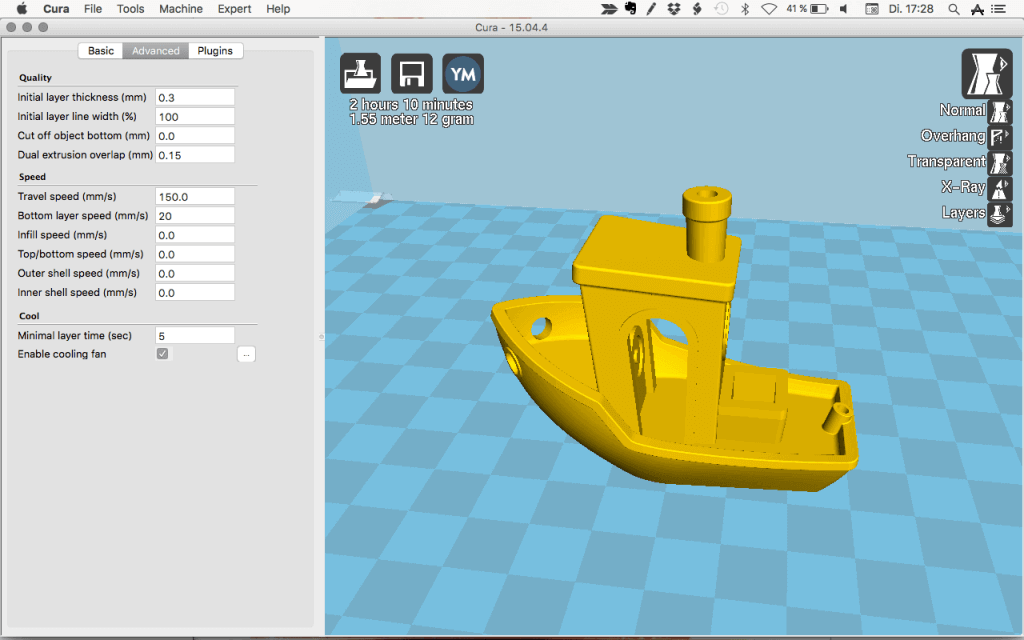 The great thing is that most of these programs are completely free and open source. nine0003
The great thing is that most of these programs are completely free and open source. nine0003
- Cura
- CraftWare
- 123D Catch
- 3D Slash
- TinkerCAD
- 3DTin
- Sculptris
- ViewSTL
- Netfabb Basic
- Repetier
- FreeCAD
- SketchUp
- 3D Tool
- Meshfix
- Simplify3D
- Slic3r
- Blender
- MeshLab
- Meshmixer
- OctoPrint
#1: Cura
For beginners who need a slicer to prepare STL files for 3D printing
Cura is the default slicer software for all Ultimaker 3D printers, but can be used with most others , including RepRap, Makerbot, Printrbot, Lulzbot and Witbox. The program is completely open source, its capabilities can be extended using plugins.
This program is very easy to use and allows you to manage the most important 3D printing settings through a clear interface.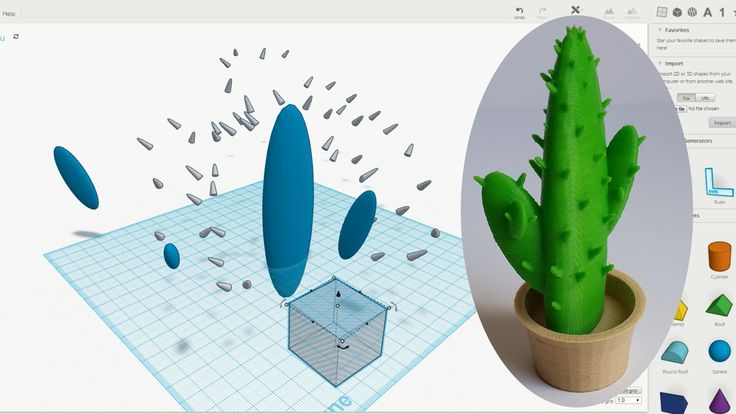 Start in Basic mode to quickly get up to speed and change print quality settings. If finer control is required, switch to Expert mode. nine0003
Start in Basic mode to quickly get up to speed and change print quality settings. If finer control is required, switch to Expert mode. nine0003
Cura can also be used to directly control the printer, but then the printer and computer must be connected to each other.
Download: Cura
Price: Free
Systems: PC, Mac, Linux
#2: CraftWare
3D printers by the Hungarian startup CraftUnique to support their CraftBot crowdfunding machine. However, the program works with other printers. nine0003
Like Cura, CraftWare allows you to switch from "Easy" to "Expert" mode, depending on how confident you feel. It's a colorful app that features a visual G-code visualization with each function represented by a different color. But the most outstanding feature is the individual support service. As far as we know, only the paid program Simplify3D has this.
Please note, however, that this program is still in beta, so bugs may occur. nine0003
Download: CraftWare
Price: Free
Systems: PC, Mac
#3: 123D Catch
-systems, smartphones and tablets, which allows you to convert images of objects into a 3D model. Pictures can be taken with a smartphone/tablet or digital camera.
Pictures can be taken with a smartphone/tablet or digital camera.
You need many photos of the object from different angles - the more the better - after which they will be compiled into a 3D model. nine0003
123D Catch is more of a fun app than a professional 3D printing tool, but after some tambourine dancing, you can get good results, especially when paired with an STL editor like MeshLab or Meshmixer.
Price: Free
Systems: PC, Android, iOS, Windows Phone
#4: 3D Slash
and surprisingly simple, and refreshingly new. With 3D Slash, you can design 3D models using your dice skills. nine0003
You can start with a large block and, like a virtual sculptor, remove small cups from it with tools such as a hammer or drill, or start from empty space and build a model from cubes and other shapes. You can paint with flowers or use template pictures.
Other features worth mentioning are tools for creating logos and 3D text. The Logo Wizard imports an image and creates a 3D model, while the Text Wizard allows you to enter and format text, and then turn it into 3D. nine0003
nine0003
Recommended!
Download: 3dslash.net
Price: Free
Systems: PC, Mac, Linux, Browser
#5: TinkerCAD
- A computer-aided design (CAD) system for 3D printing, which is a good starting point for beginners. Since its capabilities are limited compared to Blender, FreeCAD and SketchUp, many users switch to more powerful tools after some time. nine0003
As in 3D Slash, here you can build models from basic shapes. At the same time, unlike 3D Slash, TinkerCAD allows you to create vector shapes in 2D and convert them into three-dimensional models.
Come in: Autodesk TinkerCAD
Price: Free
Systems: Browser
#6: 3DTin
For beginners who want to create 3D models for printing
online is another easy and intuitive tool choice for beginners in 3D modeling. All you need is a Chrome or Firefox browser with WebGL enabled. nine0003
Choose from a huge library of 3D shapes and add them to your sketch. All sketches are stored in the cloud, access to them is free if you honor the Creative Commons license. Everything can be exported to STL or OBJ formats.
All sketches are stored in the cloud, access to them is free if you honor the Creative Commons license. Everything can be exported to STL or OBJ formats.
Enter: 3DTin
Price: Free
Systems: Browser
#7: Sculptris
For beginners who want to create 3D printable models
clay. This is a fantastic 3D modeling program if figurines are your main task. For example, you can make a bust of your favorite video game or comic book character. Sculptris is completely free and bills itself as a stepping stone to the more complex (and expensive) ZBrush tool. nine0003
Download: Pixologic Sculptris
Price: Free
Systems: PC, Mac
#8: ViewSTL
For beginners who want to view STL files
ViewSTL is the easiest way to view STL files . Simply open a web page and drag the STL onto the dotted box.
The STL online viewer allows you to display the model in one of three views: flat shading (for a quick view), smooth shading (for a high-quality image), and wireframe.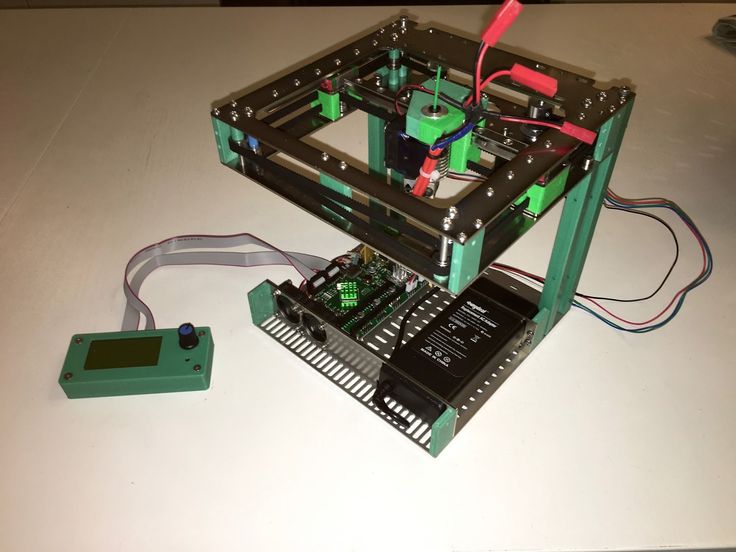 nine0003
nine0003
Enter: ViewSTL
Price: Free
Systems: Browser
#9: Netfabb Basic
some nice features that allow you to analyze, "repair" and edit STL files before moving on to the model cutting stage.
A good choice if you need more than just a slicer and want to be able to quickly fix STL files without having to learn programs like MeshLab or Meshmixer. nine0003
Don't let the 'Basic' in the name fool you, Netfabb Basic is actually a very powerful 3D printing tool. It's "basic" only in the sense that it doesn't cost €1,500 like Netfabb Professional!
Download: netfabb.de
Price: Free
Systems: PC, Mac, Linux
No. 10: Repetier
For advanced to prepare STL files for 3D printing
9002 the next level of 3D printer slicer software, but if you want to stay open source, you should look into Repetier. It is the great grandfather of 3D printing software and a favorite of the RepRap community. nine0003
nine0003 Today the program is moving by leaps and bounds from the level for beginners to advanced users. Packaged in an all-in-one configuration, it supports up to 16 extruders, multi-slicing via plug-ins, and virtually every fusing 3D printer on the market. Get ready to tinker!
What's more, Repetier Host works remotely via Repetier Server, so that the 3D printer can be controlled via a browser, tablet or smartphone. nine0003
Download: Repetier
Price: Free
Systems: PC, Mac, Linux
#11: FreeCAD
The program is a great option for developing your design skills. More technically, this parametric 3D modeling program allows you to easily change the project by rolling back through the history of the model and editing the parameters. nine0003
Download: freecadweb.org
Price: Free
Systems: PC, Mac, Linux
#12: SketchUp
For beginners who want to create 3D printable models
SketchUp functionality, with a user-friendly interface and a relatively flat learning curve (i.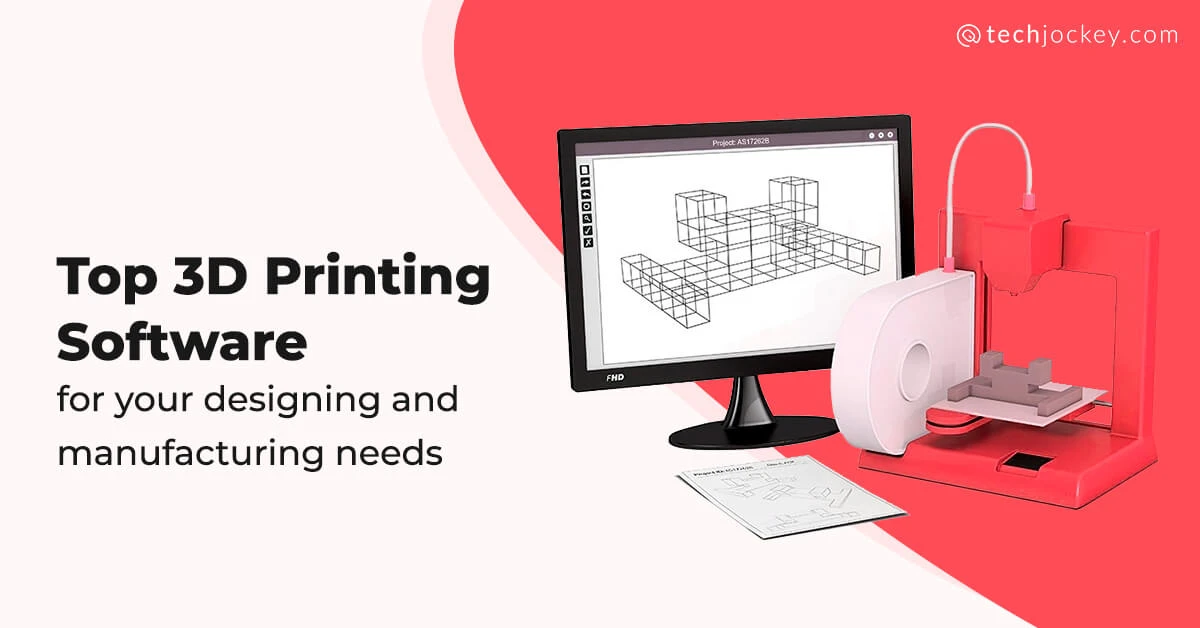 e., as experience grows with the time spent), the ideal program for developing three-dimensional models.
e., as experience grows with the time spent), the ideal program for developing three-dimensional models.
The Make SketchUp version is free and will have everything you need for 3D modeling if you also download and install the free STL exporter. There is also a professional edition for architects, interior designers and engineers. nine0003
Download: sketchup.com
Price: Free (SketchUp Make), $695 (SketchUp Pro)
Systems: PC, Mac, Linux
#13: 3D-Tool Free Viewer
view and check STL files
3D-Tool Free Viewer is a sophisticated tool that, among other things, allows you to check the structural integrity and printability of your file. With the Cross-Section function, for example, you can look at the model from the inside and check the wall thickness. Very useful if you want to check your STL file for killer errors before printing. nine0003
Download: 3D-Tool
Price: Free
Systems: PC
#14: Meshfix
your model for errors.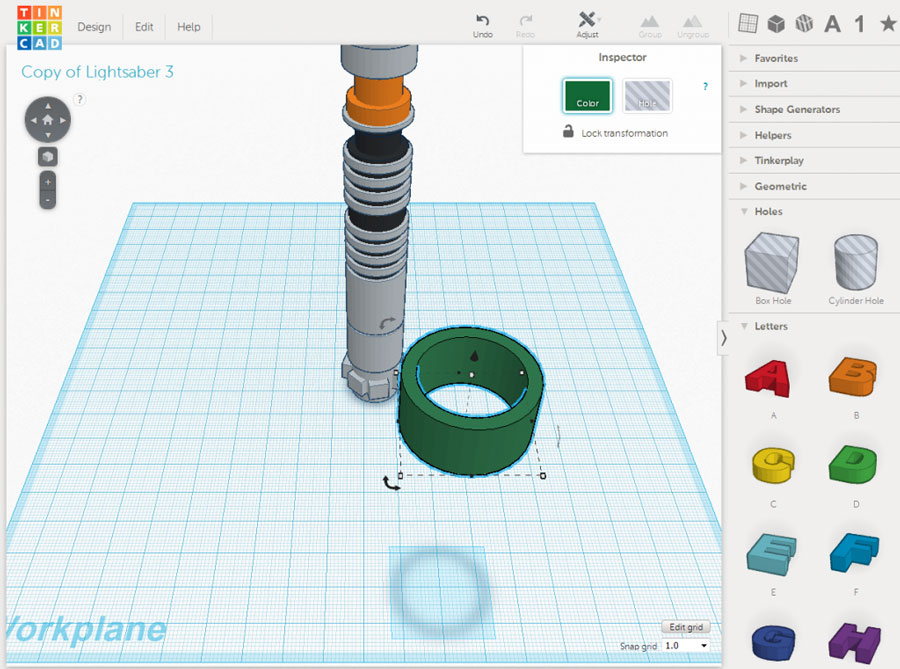
Price: Free
Systems: Browser
#15: Simplify3D
For professionals to prepare STL files for 3D printing print. A flexible algorithm checks the model for problems, fixes them, shows a preview of the printing process (ideal for identifying potential problems), and then slices it. nine0003
This slicer offers the best infill pattern options in the competition. For models that require supports, Simplify3D will create the appropriate structures on its own and give you full control over their placement. For printers with a dual extruder, when printing with different materials, the Dual Extrusion wizard will help, as a result of which, for example, it will be easier to remove the dissolving filament.
Simplify3D supports 90% of today's commercially available desktop 3D printers and is compatible with Marlin, Sprinter, Repetier, XYZprinting, FlashForge, Sailfish and MakerBot firmware. Simplify3D can also be used to directly control the printer, but then the printer and computer must be connected to each other. nine0003
nine0003
Download: simplify3d.com
Price: $149
Systems: PC, Mac, Linux
#16: Slic3r
source code, which has a reputation as a carrier of super new functionality, which you will not find anywhere else. The current version of the program is able to show the model from multiple angles, so that the user gets a better preview experience.
There's also an incredible 3D honeycomb infill, the first of its kind that can extend over multiple layers rather than repeating itself like a stamp. This significantly increases the strength of the internal filling of the model and the final printout.
Another option is direct integration with Octoprint. Once the files on the user's desktop are sliced, they can be directly uploaded to Octoprint with one click.
Download: Slic3r
Price: Free
Systems: PC, Mac, Linux
#17: Blender
For professionals who want to create 3D printable models
Blender is a popular computer-aided design (CAD) system with a steep learning curve. Not at all the best choice for beginners, but what you need if you are quite experienced and need something more complex for modeling and printing.
Not at all the best choice for beginners, but what you need if you are quite experienced and need something more complex for modeling and printing.
In short, Blender is one of the most powerful tools in existence. Its community is always ready to help, there are a lot of educational materials. It's also open source, so enthusiasts often write extensions to make it even better and more powerful. nine0003
Download: blender.org
Price: Free
Systems: PC, Mac, Linux
#18: MeshLab
For professionals to prepare STL files for 3D printing
MeshLab - advanced editor. It allows you to remove parts of a 3D model, merge two models into one, patch holes. If you need a program to modify models for 3D printing or some kind of "repair" work, MeshLab is the right choice.
Price: Free
Systems: PC, Mac, Linux
#19: Meshmixer
For professionals to prepare STL files for 3D printing files. It's especially good for identifying potential problems and fixing them automatically.